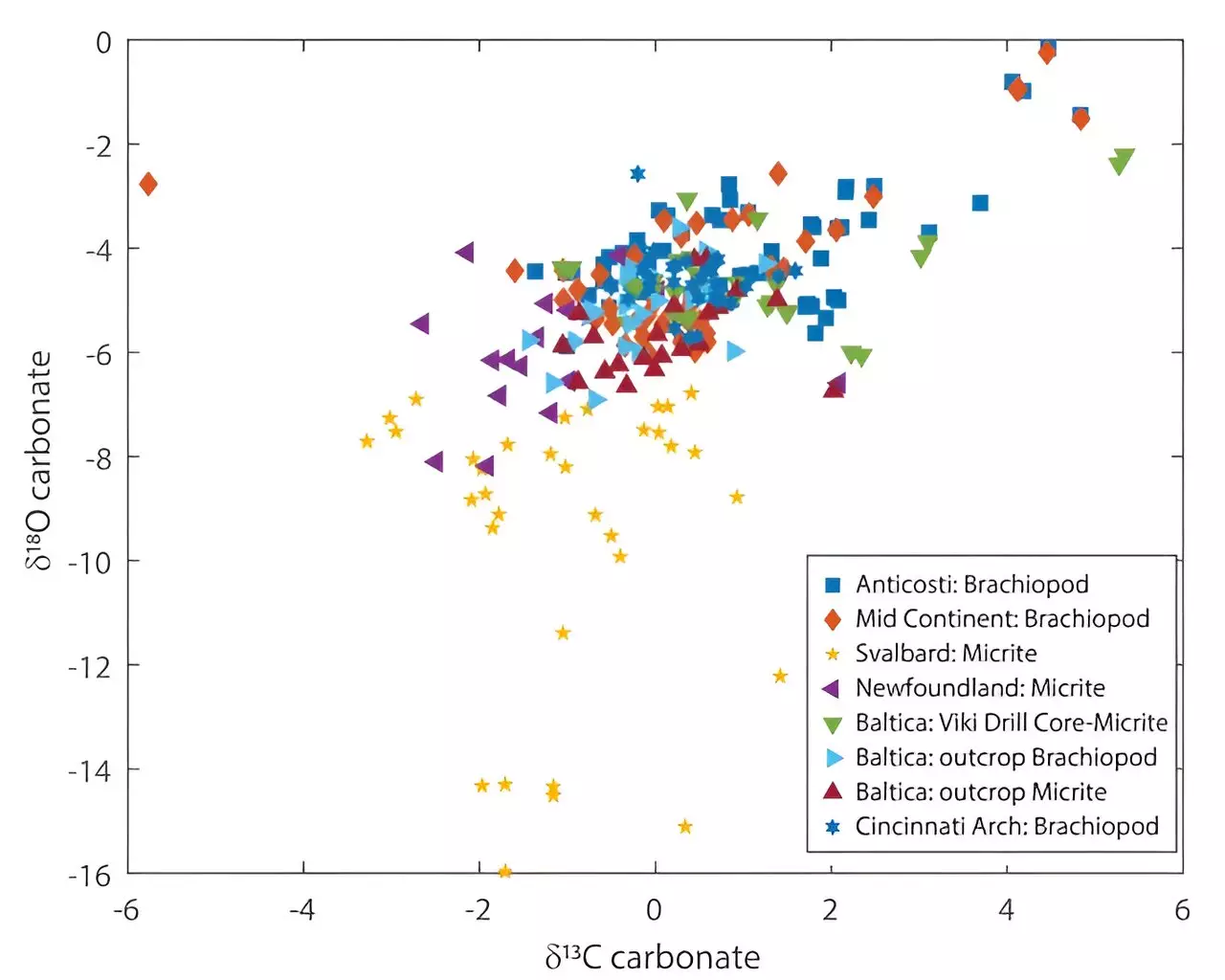Recent scientific endeavors have underscored the dynamic nature of ocean chemistry, particularly concerning the isotopic composition of seawater over geological time. A pivotal study published in the *Proceedings of the National Academy of Sciences* presents compelling evidence that the ratio of oxygen isotopes, specifically 16O and 18O, has undergone significant changes across a staggering timeline of 540 million years. This hypothesis has been a sore point of contention among oceanographers and Earth scientists, igniting debates about the implications these shifts have on our understanding of historical oceanic conditions.
For decades, the scientific community has been torn between two opposed viewpoints regarding the oxygen isotope ratio in seawater. Some researchers staunchly assert that this ratio, denoted as δ18O, has remained relatively stable, while others suggest that it has indeed fluctuated, influenced by both geological processes and climatic variability. The recent findings by an international team of scientists bolster the latter argument, positioning their evidence as a crucial contribution to the dialogue surrounding paleoclimate reconstruction.
The study’s investigators focused their exploration on rock samples from the Ordovician period, a time period rich in geological and biological diversity. By utilizing a method known as clumped isotope thermometry, they were able to gauge the binding of carbon and oxygen isotopes within carbonate minerals. This innovative technique allowed researchers to derive temperature estimations for the seawater enveloping these ancient rocks. Notably, the results revealed a cooler environment with a lower δ18O than what previous models had suggested, indicating a gradual evolution of the oxygen isotope ratio over eons.
Researchers posited that principal drivers of this isotopic change include hydrothermal alterations resulting from hot water interactions with geological formations, alongside the less impactful weathering processes of continental crust. Their findings not only amplify the discourse on isotopic ratios but also spur further inquiry into the mechanisms driving these long-term changes in ocean chemistry.
While this research adds a notable piece to the puzzling history of our planet’s oceans, it remains crucial to acknowledge the limitations of these findings. They do not serve as conclusive proof of a prevailing trend, emphasizing the need for ongoing investigations. As scientists continue to analyze geological records from varying time periods, the hope is that more robust data can emerge to fully elucidate the complexities of oxygen isotope dynamics.
The ongoing study of δ18O ratios not only assists in reconstructing historical ocean temperatures but also paves the way for understanding present-day climate systems. With every discovery, researchers inch closer to deciphering the intricacies of our planet’s climatic past and its broader implications on current environmental changes. The isotopic saga of seawater is far from over, and the scientific community’s quest for clarity is sure to advance into new territories of exploration.


Leave a Reply